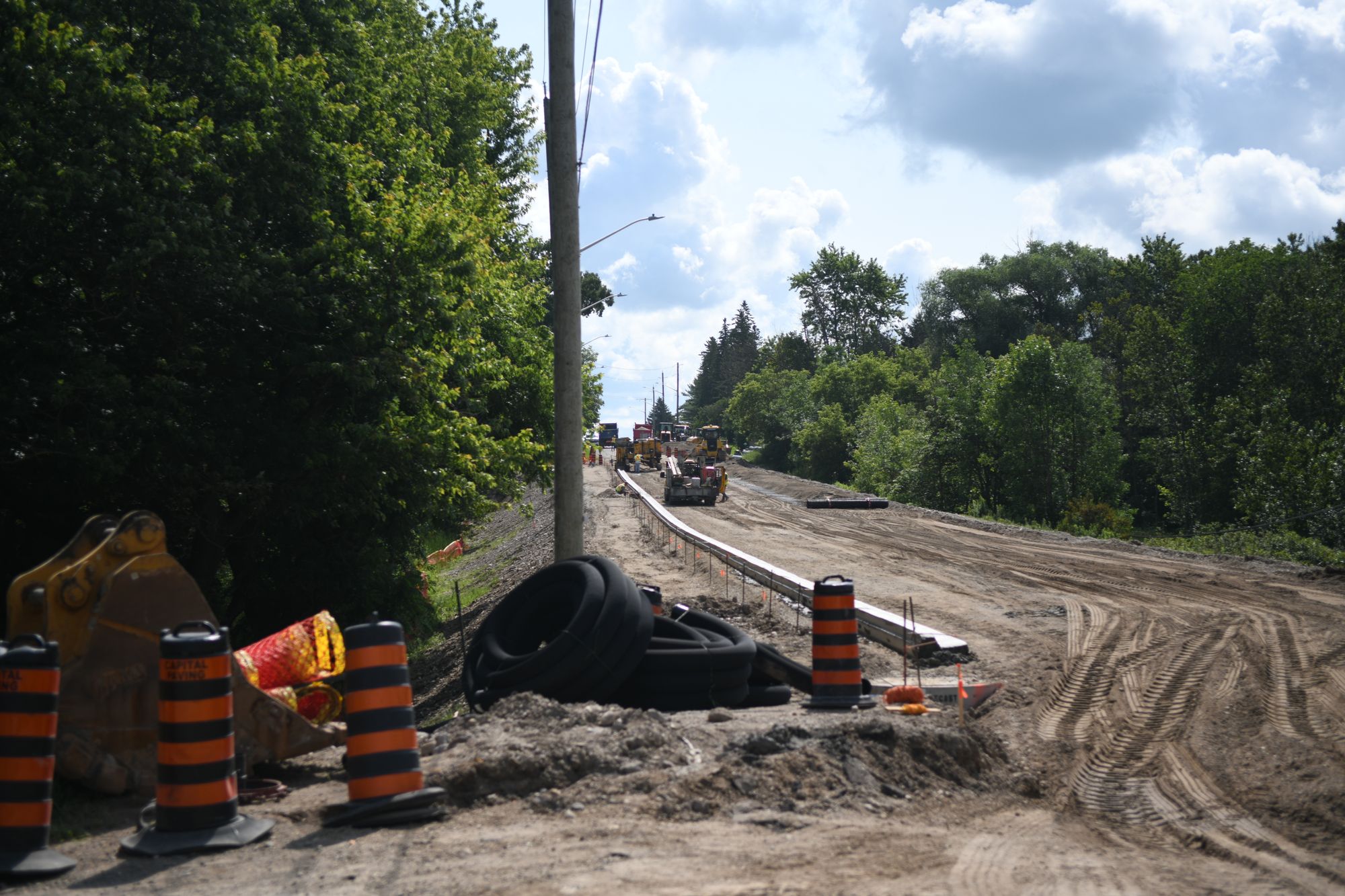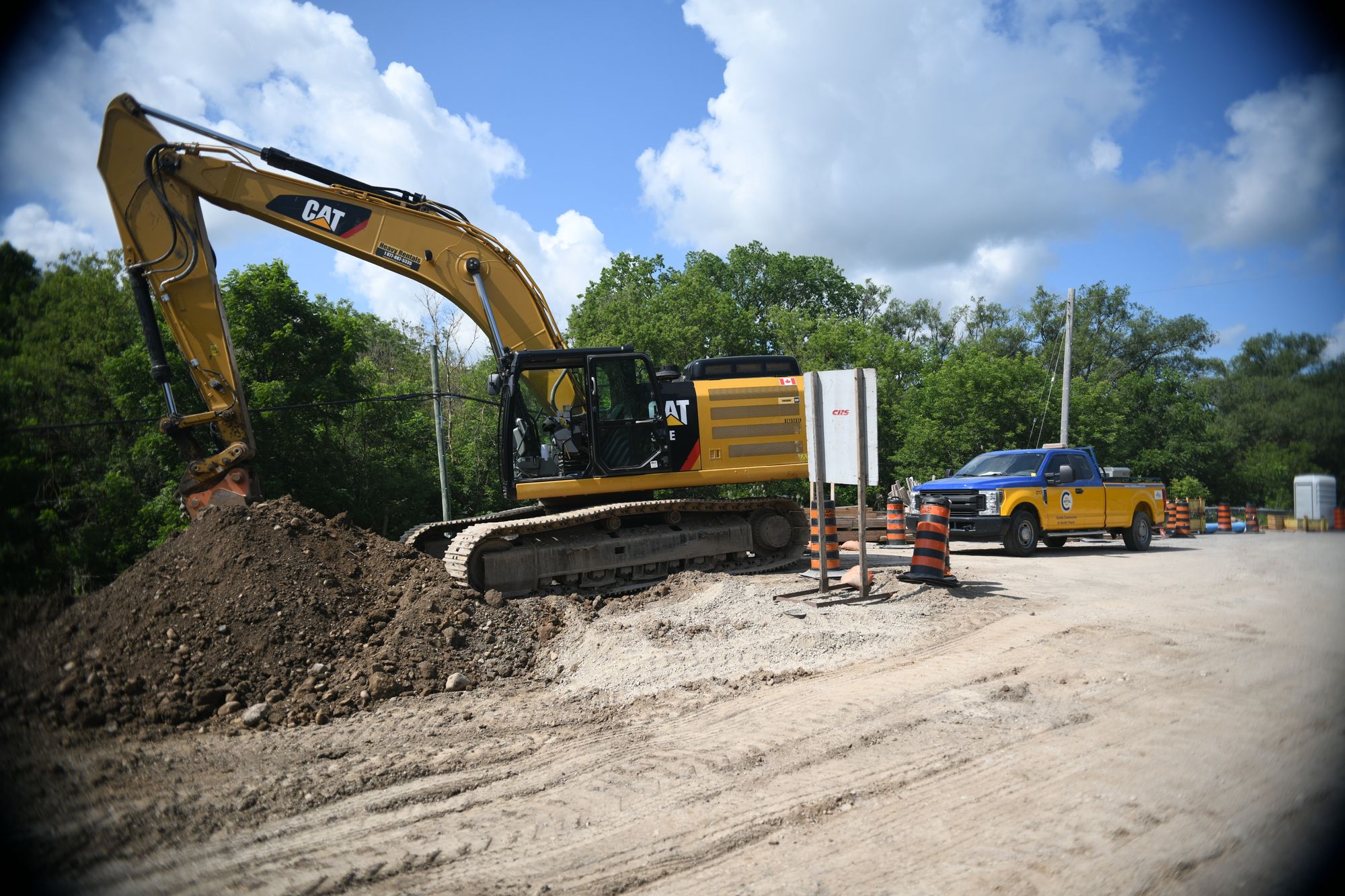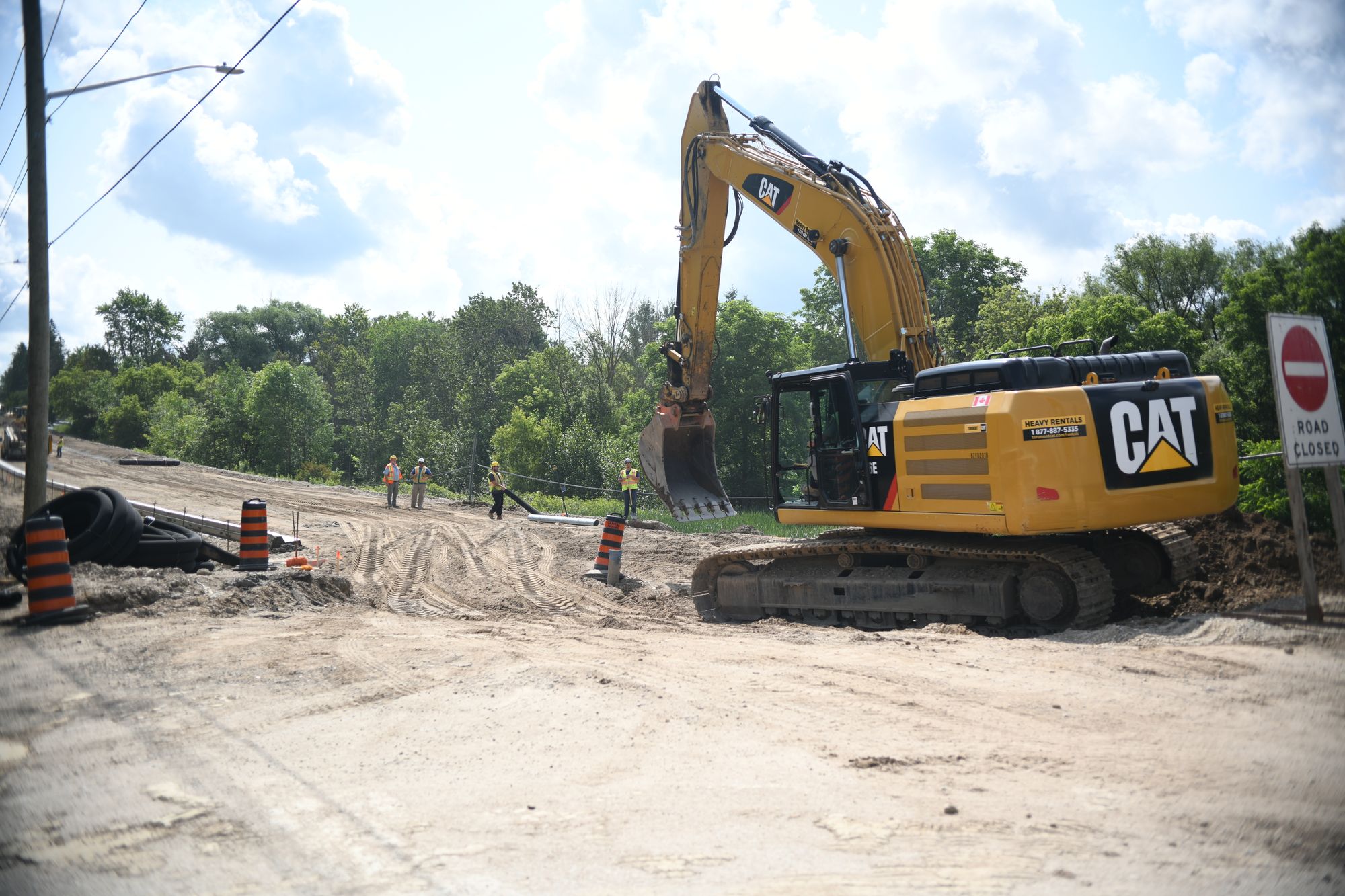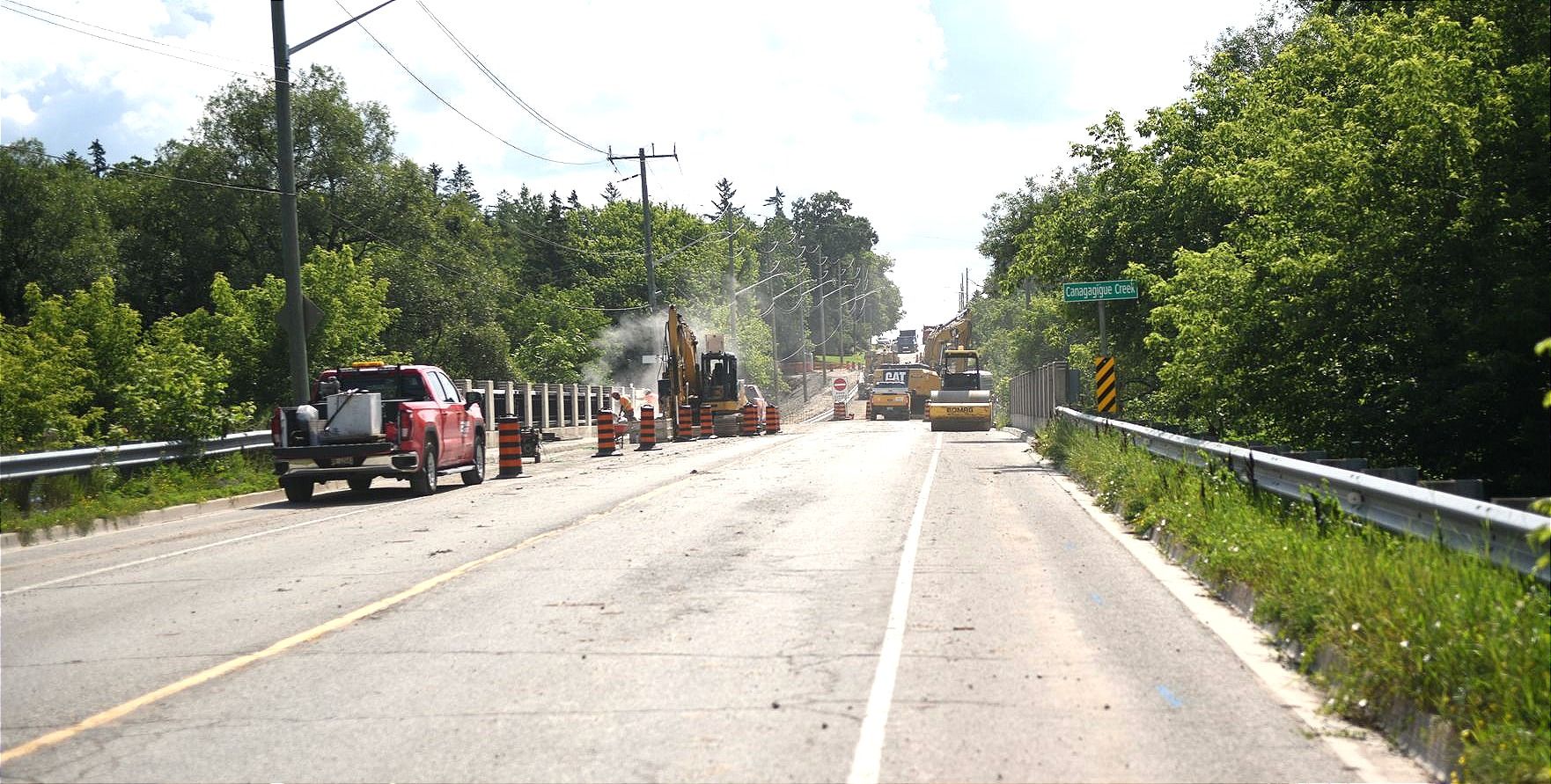Contaminants found underground during the reconstruction of Church Street East in Elmira are on the radar of the provincial Ministry of Environment, which is aware of concerns.
“The Ministry of the Environment, Conservation and Parks is aware of the concern regarding tars, contaminated soils and historic third-party dumping beneath a construction area on Church Street in Elmira. This is linked to the Region of Waterloo’s ongoing construction project on Church Street, between George Street and Larry’s Lane,” said Jason Rice, a regional engineer with the ministry, in an email to The Observer.
Specifics have yet to be released by either the Region of Waterloo or the MECP.
“The region identified a historic asphalt road layer during roadway excavation which, according to the Region, appears to have been constructed with tarmacadam – a material containing coal-tar, historically used for road construction,” said Lubna Hussain, director of the west central region, drinking water and environmental compliance division at the MECP to Alan Marshall in an email shared with The Observer.
“The Region tested the soils around this material and results received resulted in the region’s contractor retaining an approved waste hauler to transport the waste asphalt and the impacted soils to an approved waste transfer and processing site for proper disposal.
“As the material has been removed and disposed of in an appropriate manner, the Guelph District Office has no further concerns,” she said in the same email.
Boris Latkovic, a senior engineer with the region, said that in preparation for reconstruction of Church Street East, bore holes were drilled in the project area to test the soil. This was to learn if the soil could be reused or needed to be disposed of.
The analysis of the soil showed traces of ethylbenzene, toluene, xylene, petroleum hydrocarbons (PHCs), and polycyclic aromatic hydrocarbons (PAHs).



“While excavating [Church Street East] the week of June 19, we unexpectedly found an old asphalt road surface below the existing road between George Street and Larry’s Lane. We used excavators to expose the asphalt, stripped it clean of other material with dozers, then removed it with an excavator and placed it into haul trucks,” he said.
“The elements found in the soil in the area of the asphalt layer, were consistent with the old road built with asphalt containing tarmacadam — material that was commonly used in road construction and gives off a petroleum smell when uncovered. The elements found in the soil were classified as non-hazardous material, which meant the soil could be disposed of by hauling it to a soil management site in Dorchester.”
He said removing the asphalt road layer added an extra week to the project.






